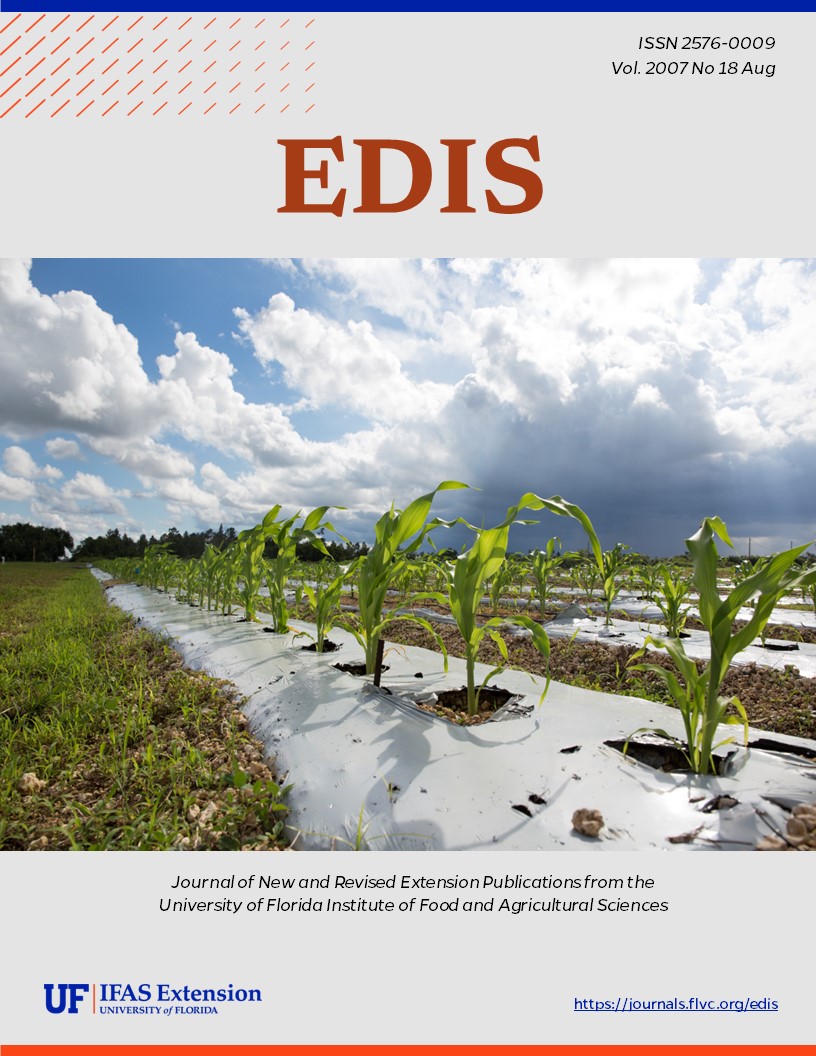Abstract
EENY-411, a 7-page illustrated fact sheet by Donald W. Hall, is part of the Featured Creatures collection. It provides information about this beautiful moth with moon-like spots. Includes references. Published by the UF Department of Entomology and Nematology, June 2007.
References
Brown SG, Boettner GH, Yack JE. 2007. Clicking caterpillars: acoustic aposematism in Antheraea polyphemus and other Bombycoidea. The Journal of Experimental Biology 210: 993-1005. https://doi.org/10.1242/jeb.001990
Covell CV. 2005. A Field Guide to Moths of Eastern North America. Special Publication Number 12. Virginia Museum of Natural History. Martinsville, Virginia. 496 pp.
Ferguson DC. 1972. In Dominick RB, Edwards CR, Ferguson DC, Franclemont JG, Hodges RW, Munroe EG. The Moths of America North of Mexico, fasc. 20.2B, Bombycoidea (in part). EW Classey, LTD. Middlesex, England.
Godfrey GL, Jeffords M, Appleby JE. 1987. Saturniidae (Bombycoidea). In Stehr FW. Immature Insects. Kendall/Hunt Publishing Company. Dubuque, Iowa. pp. 513-521.
Hilton HO. 1965. Pupal escape mechanism of certain saturniid moths. 48: 239-24. https://doi.org/10.2307/3493776
Holland WJ. 1968. The Moth Book: A Guide to the Moths of North America. Dover Publications, Inc. New York. (First published in 1903 by Doubleday, Page and Company. New York) 479 pp.
Kellog SK, Fink LS, Brower LP. 2003. Parasitism of native luna moths, Actias luna (L.) (Lepidoptera: Saturniidae) by the introduced Compsilura concinnata (Meigen) (Diptera: Tachinidae) in central Virginia, and their hyperparasitism by trigonalid wasps (Hymenoptera: Trigonalidae). Environmental Entomology 32: 1019-1027. https://doi.org/10.1603/0046-225X-32.5.1019
Lindroth RL. 1989. Chemical ecology of the luna moth: Effects of host plant on detoxification enzyme activity. Journal of Chemical Ecology 15: 2019-2029. https://doi.org/10.1007/BF01207434
Packard AS. 1914. Monograph of the Bombycine Moths of North America. Part 3. Memoirs of the National Academy of Science 12: 1-516.
Peterson A. 1965. Some eggs of moths among the Sphingidae, Saturniidae, and Citheroniidae (Lepidoptera). 48: 213-219. https://doi.org/10.2307/3493773
Powell JA. 2003. Lepidoptera (Moths, Butterflies). In VH Resh, Cardé RT, editors. Encyclopedia of Insects. Elsevier Science (USA) San Diego, California. pp. 631-663.
Priddle TR. 1967. Structures employed by Actias luna (Saturniidae) in effecting emergence from the cocoon. Journal of the Lepidopterists Society 21: 249-252.
Tietz HM. 1972. An Index to the Described Life Histories, Early Stages and Hosts of the Macrolepidoptera of the Continental United States and Canada. Part 1. The Allyn Museum of Entomology. Sarasota, Florida. (Distributed by Entomological Reprint Specialists. Los Angeles, California). 536 pp.
Tuskes PM, Tuttle JP, Collins MM. 1996. The Wild Silk Moths of North America: The Natural History of the Saturniidae of the United States and Canada. Cornell University Press. Ithaca, New York. 250 pp. https://doi.org/10.7591/9781501738005
Villard P. 1975. Moths and How to Rear Them. Dover Publications, Inc. New York, New York. 242 pp.
Worth BC, Muller J. 1979. Captures of large moths by an UV light trap. Journal of the Lepidopterists' Society 33: 261-264.
Wright DA. 1967. The effects of photoperiod on the initiation of pupal diapause in the wild silkworm, Actias luna. Journal of the Lepidopterists Society 21: 255-258.

